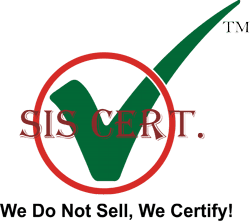HACCP (Hazard Analysis Critical Control Point)
🍴 HACCP Certification in 30 Days*
🍽️ Strengthen Food Safety & Compliance
- Identify and control food hazards proactively
- Ensure compliance with food-safety laws
- Prevent contamination and health risks
- Increase consumer trust and brand reliability
- 100 % guarantee — we don’t get paid until you’re certified
🎁 Limited Time: Get a Free 2-Hour Training & Awareness Session with Certificates — for a Group of 5!
HACCP Certification (Hazard Analysis Critical Control Point) is a universally acknowledged strategy for avoiding microbiological, substance, and physical contamination along with the sustenance production network.
The HACCP Certification strategy does this by recognizing the dangers, building up basic control focuses, setting basic points of confinement, and guaranteeing control measures are approved, checked, and observed before execution.
The viable usage of HACCP Certification will upgrade the capacity of organizations to ensure and improve brands and private names, advance customer certainty and adjust to administrative and advertising prerequisites.
🍴 Benefits of HACCP Certification
🥗 Food Safety Assurance
Prevents food contamination by identifying and controlling key hazards.
📋 Legal Compliance
Ensures adherence to global food-safety regulations and standards.
🧪 Risk Reduction
Helps avoid product recalls and ensures consistent food quality.
🌍 Market Access
Facilitates compliance for exports and international trade.
🤝 Consumer Trust
Reinforces brand reliability and product integrity.
🏆 Brand Protection
Safeguards your reputation and promotes long-term business success.
Other Benefits of HACCP Certification :
- Saves your business cash over the long haul
- Avoids you harming your clients
- Food Safety principles increment
- Ensures you are agreeable with the law
- Food quality benchmarks increment
- Organize your procedure to create safe nourishment
- Organizes your staff advancing cooperation and effectiveness
- Due to constancy protection in court
Applicability of HACCP Certification :
HACCP can be connected all through the evolved way of life from essential generation to conclusive utilization and its execution ought to be guided by logical proof of dangers to human health. Just as improving sanitation, usage of HACCP Certification can give other noteworthy advantages. Moreover, the utilization of HACCP frameworks can help the investigation by administrative specialists and advance global exchange by expanding trust in sanitation.
The effective utilization of HACCP requires the full responsibility and inclusion of the board and the work power. It additionally requires a multidisciplinary approach; this multidisciplinary approach ought to incorporate, when proper, ability in agronomy, veterinary health, creation, microbiology, drug, general well-being, nourishment innovation, natural health, science, and design, as per the specific examination. The utilization of HACCP is good with the usage of value the board frameworks, for example, the ISO 9001 arrangement, and is the arrangement of the decision in the administration of Food Safety inside such frameworks.
ISO HACCP Frequently Asked Questions (FAQs)
Answer:
HACCP is a food-safety management strategy that helps organizations identify hazards (microbiological, chemical or physical) across the food supply chain, establish critical control points (CCPs), set critical limits, and monitor and verify controls before product release.
Answer:
Any organization throughout the food supply chain—from primary producers to final consumers—can implement HACCP. This includes food manufacturers, processors, food service operators, storage and transport businesses. HACCP can also complement other standards like ISO 22000 Food Safety Management Systems.
Answer:
- Improves food safety assurance by controlling contamination risks.
- Helps ensure legal/compliance alignment with food-safety laws.
- Reduces risk of recalls, enhances consistency and consumer trust.
- Boosts market access and brand credibility in global food markets.
Answer:
The typical steps include:
Conducting a hazard analysis (identify hazards & assess risks).
Identifying Critical Control Points (CCPs) where controls are needed.
Establishing critical limits (e.g., temperature, pH, salt level) for CCPs.
Defining monitoring procedures for CCPs.
Establishing corrective actions if limits are breached.
Setting up record-keeping and verification procedures to ensure control system effectiveness.
CERTIFICATION PROCESS
Ready to Get ISO Certified?
Join 500+ Global Companies that have Successfully Achieved ISO Certification with Us.
Missing Something?
We’re here to help you find exactly what you need—just let us know, and we’ll guide you in the right direction.

